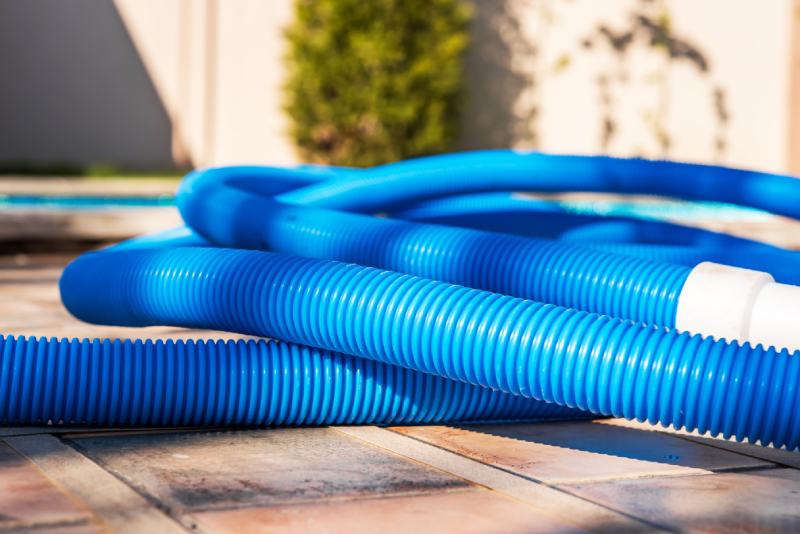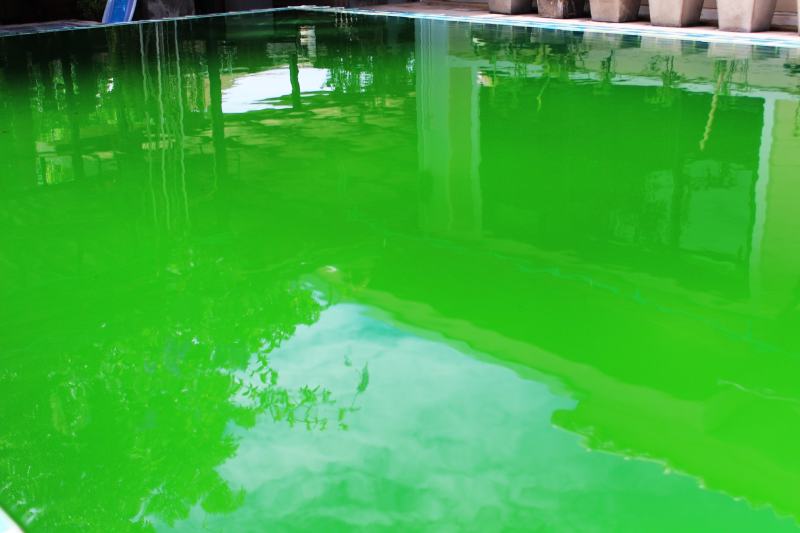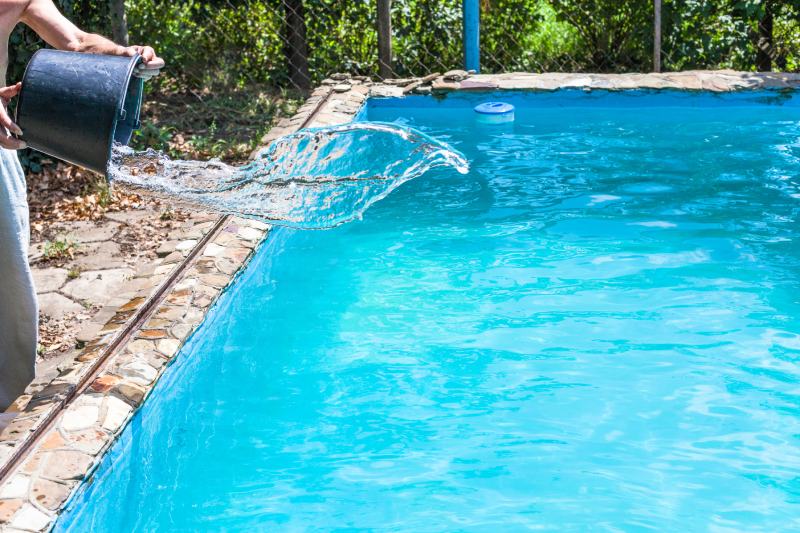Phosphates in pool water can significantly impact water quality and the overall maintenance of your swimming pool. These chemical compounds, often introduced through various sources such as fertilizers, detergents, or even human waste, can contribute to algae growth and reduce the effectiveness of sanitizers. Algae blooms can turn your pool water green, making it unattractive and unsafe for swimming. Additionally, high phosphate levels can interfere with the ability of chlorine and other sanitizers to properly disinfect the water, leaving it vulnerable to bacteria and other contaminants.
Introduction to Phosphates in Pool Water
Phosphates, a form of phosphorus, are naturally present in many water sources. However, when phosphates accumulate in high concentrations in pool water, they become a breeding ground for algae and pose challenges for pool owners. While algae spores are always present in the environment, phosphates are a nutrient source, promoting their rapid growth. Pool owners need to understand the effects of phosphates and take proactive measures to maintain optimal water quality.

Effects of Phosphates on Pool Water Quality
Algae Growth: The Role of Phosphates
Phosphates are a vital food source for algae, allowing them to multiply and thrive in pool water. Even small amounts of sunlight can trigger algae blooms when phosphates are in excess. These blooms can turn the water cloudy or green, creating an unsightly and uninviting pool environment. Algae growth compromises the pool’s aesthetic appeal and can pose health risks to swimmers. By understanding the link between phosphates and algae growth, pool owners can take proactive steps to prevent and manage this issue.
Reduced Effectiveness of Sanitizers: Chlorine Levels and Phosphates
High phosphate levels in pool water can interfere with the effectiveness of sanitizers, such as chlorine. Chlorine is commonly used to disinfect pool water and prevent the growth of harmful bacteria. However, when phosphates are in excessive amounts, they can bind with chlorine molecules, forming compounds that are less effective at killing bacteria and other microorganisms. This reduction in sanitizer effectiveness compromises the overall cleanliness and safety of the pool. It highlights the importance of managing phosphate levels to ensure proper sanitation and water balance.
Managing Phosphate Levels for a Clean and Balanced Pool
Importance of Testing Phosphate Levels Regularly
Regular testing of phosphate levels is crucial for maintaining a clean and balanced pool. By testing the water, pool owners can determine the concentration of phosphates present and take appropriate action if levels are elevated. This is part of the benefits of professional pool maintenance. It is recommended to include phosphate testing as a part of routine pool maintenance to prevent issues related to algae growth and reduced sanitizer effectiveness.
Understanding the Testing Process: Phosphate Test Kits and Pool Professionals
Phosphate test kits are user-friendly tools allowing pool owners to measure phosphate levels accurately. These kits typically include test strips or liquid reagents that react with phosphates and produce a color change, indicating the concentration. Following the instructions provided with the test kit is essential to obtain accurate results. Alternatively, pool professionals possess the expertise and equipment to conduct comprehensive water analysis, including phosphate testing. Their guidance can be precious in complex pool systems or cases requiring precise measurements.
Interpreting Results: Assessing Phosphate Levels in Your Pool Water
Once the phosphate testing is complete, it is crucial to interpret the results correctly. The recommended phosphate levels may vary depending on the type of pool and specific circumstances. Generally, phosphate concentrations below 200 parts per billion (ppb) are considered acceptable. However, it is vital to consult the guidelines provided by the test kit manufacturer or seek advice from a pool professional to determine the appropriate phosphate threshold for your pool. Interpreting the results accurately will help you make informed decisions regarding phosphate management, which is part of common pool issues and how to fix them.

Removing High Phosphates from Your Pool
Effective Methods for Phosphate Removal
When high phosphate levels are detected in pool water, prompt action should be taken to reduce them. Various phosphate removal methods are available to restore water quality and prevent further issues. One practical approach is using phosphate removers, specifically designed to bind with and remove phosphates from the water. Following the recommended dosage instructions, these products can be added directly to the pool. Also, maintaining proper water chemistry and efficient filtration systems can aid in minimizing phosphate levels and preventing their reoccurrence.
Using Phosphate Removers: Application and Dosage
Phosphate removers are available in different forms, including liquid, granular, or tablet formulations. The application process and dosage instructions may vary depending on the product. Following the manufacturer’s recommendations is essential to achieve optimal results carefully. Generally, phosphate removers are added directly to the pool water, and the circulation system is run for a specified period to ensure even distribution. Regular testing should be conducted after treatment to monitor the effectiveness and verify that phosphate levels are within the desired range.
Other Strategies for Phosphate Reduction: Water Chemistry and Filtration
In addition to using phosphate removers, maintaining proper water chemistry and employing effective filtration methods can reduce phosphate levels in your pool. Balancing the pool’s pH, alkalinity, and calcium hardness helps create an environment less conducive to algae growth. Furthermore, efficient filtration systems, such as sand or cartridge filters, can capture and remove suspended particles, including phosphates. Regular cleaning and backwashing of the filter are essential to ensure optimum performance. Combining these strategies can aid in preventing high phosphate levels and maintaining a clean and balanced pool.
Why Choose Finn’s Pool Services for Phosphate Treatment?
We specialize in phosphate treatment for pool water at Finn’s Pool Services. Our experienced professionals understand the impact of phosphates on water quality and are equipped with practical solutions to address high phosphate levels. We offer comprehensive testing services to assess phosphate concentrations accurately and determine the most suitable treatment approach. With our expertise and high-quality phosphate removers, we can help restore water clarity, prevent algae growth, and optimize sanitizer effectiveness. Trust Finn’s Pool Services for reliable and efficient pool phosphate treatment, ensuring a clean and balanced pool.

Frequently Asked Questions about Phosphates in Pool Water
What Do Phosphates Do to Swimming Pool Water?
Phosphates in swimming pool water act as a nutrient source for algae, promoting their rapid growth. They can lead to algae blooms, making the water cloudy or green. High phosphate levels can also reduce the effectiveness of sanitizers, compromising the cleanliness and safety of the pool.
How to Get Rid of High Phosphates in My Pool?
You can use phosphate removers specifically designed to remove high phosphate levels from your pool. These products bind with phosphates and facilitate their removal from the water. It is essential to follow the application instructions the manufacturer provides for effective phosphate reduction.
Does Chlorine Remove Phosphates?
Chlorine alone cannot effectively remove phosphates from pool water. While chlorine can help control algae growth, it does not eliminate phosphates. Using phosphate removers in conjunction with regular sanitization practices is necessary to address high phosphate levels effectively.
How Long Does It Take for a Pool to Clear After Phosphate Remover?
The time it takes for a pool to clear after using a phosphate remover depends on various factors, including the initial phosphate concentration, water circulation, and filtration efficiency. Generally, it may take a few days to a week for the water to clear. Regular testing and ongoing maintenance are essential during this process.
Does Baking Soda Remove Phosphates from the Pool?
Baking soda does not remove phosphates from pool water. Baking soda, or sodium bicarbonate, is commonly used to raise the pool’s alkalinity and stabilize the pH level. While it serves other purposes in pool maintenance, it does not directly affect phosphate levels.
Does Muriatic Acid Remove Phosphates?
Muriatic acid, or hydrochloric acid, is ineffective in removing phosphates from pool water. Muriatic acid is typically used to lower the pool’s pH and total alkalinity levels. Specific phosphate removers should be used in combination with appropriate water chemistry adjustments to address high phosphate levels.
How Often Should I Use Phosphate Remover in My Pool?
The frequency of using phosphate removers in your pool depends on the initial phosphate levels, surrounding environmental conditions, and the effectiveness of your pool maintenance routine. It is advisable to conduct regular phosphate testing and follow the product manufacturer’s recommendations or seek advice from a pool professional to determine the appropriate treatment frequency.

Maintaining a Clean and Balanced Pool
Understanding the impact of phosphates on pool water quality is crucial for maintaining a clean and balanced swimming pool. By managing phosphate levels and preventing excessive concentrations, pool owners can avoid algae growth, improve sanitizer effectiveness, and ensure a safe and enjoyable swimming experience. Regular testing, appropriate phosphate remover use, and proper water chemistry and filtration systems are critical components of effective pool maintenance. With these measures in place, you can enjoy a sparkling, clear pool that is inviting for all to dive into.
When it comes to understanding the impact of phosphates on pool water, SwimmingPool.com provides valuable information on algae growth, water quality, and phosphate removal methods. By familiarizing yourself with the effects of phosphates and implementing proper maintenance techniques, you can ensure a clean and balanced pool environment for safe swimming.




